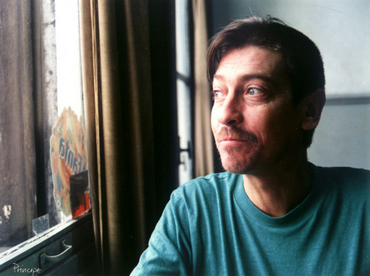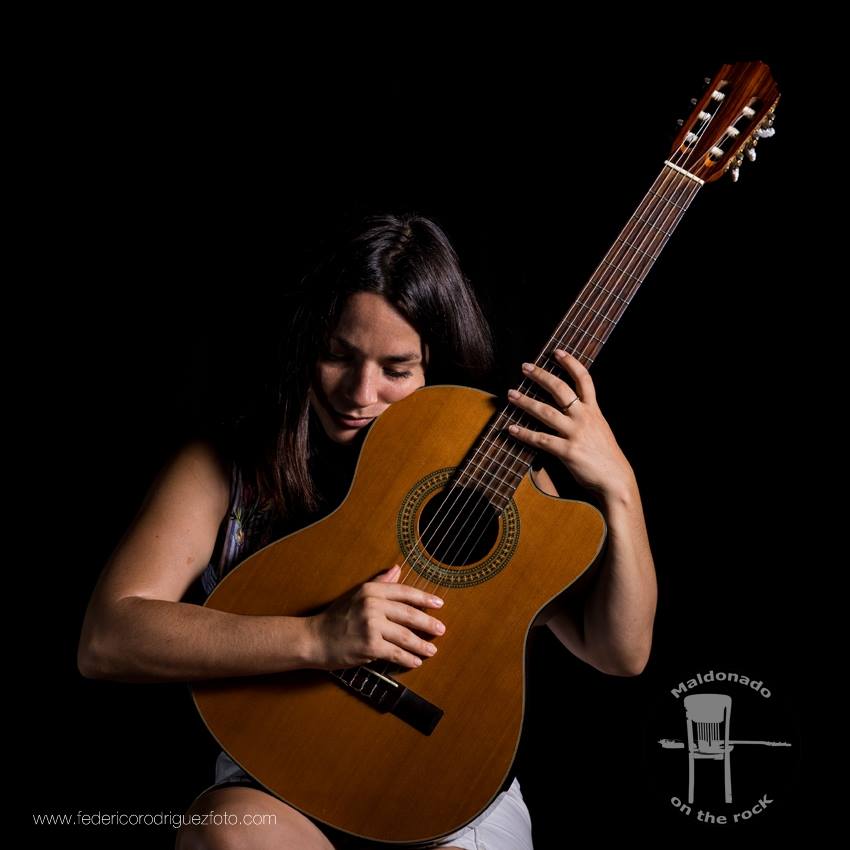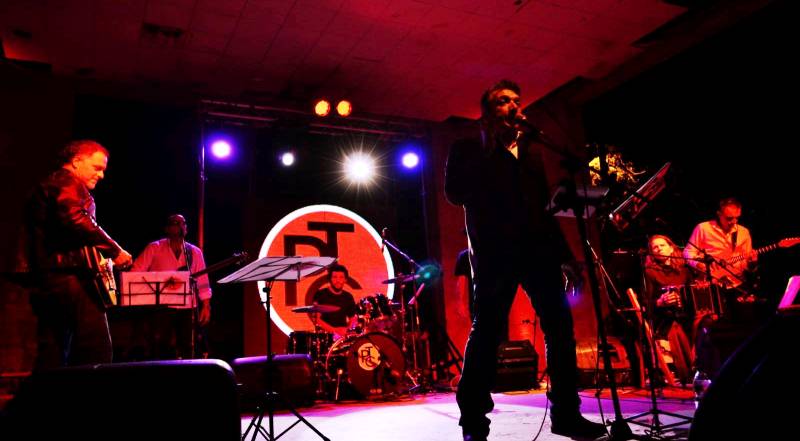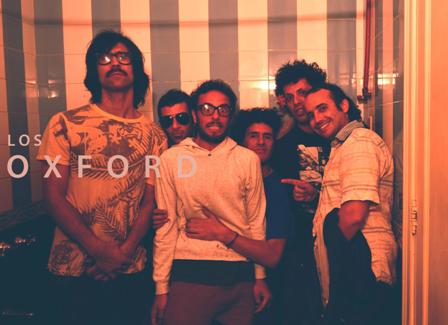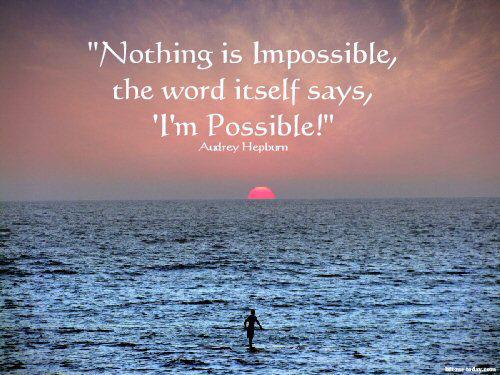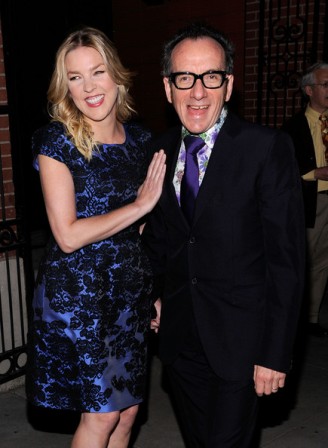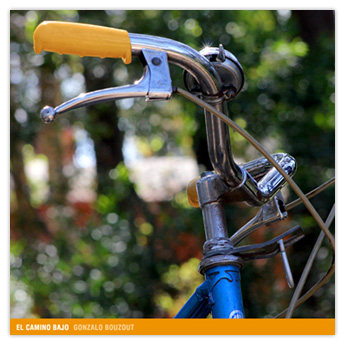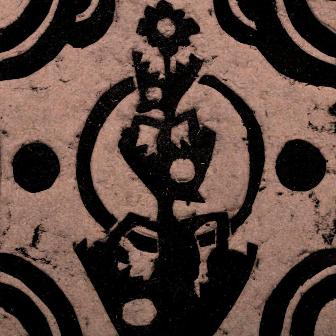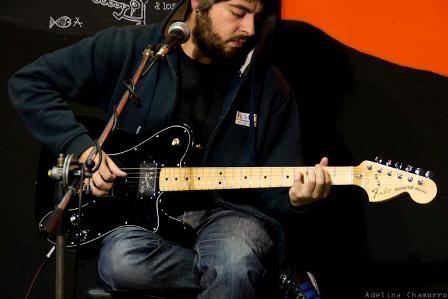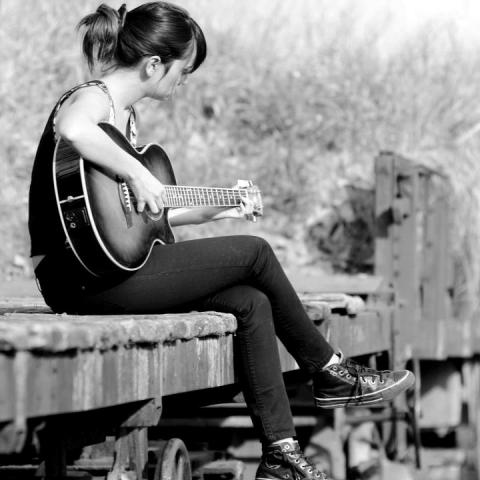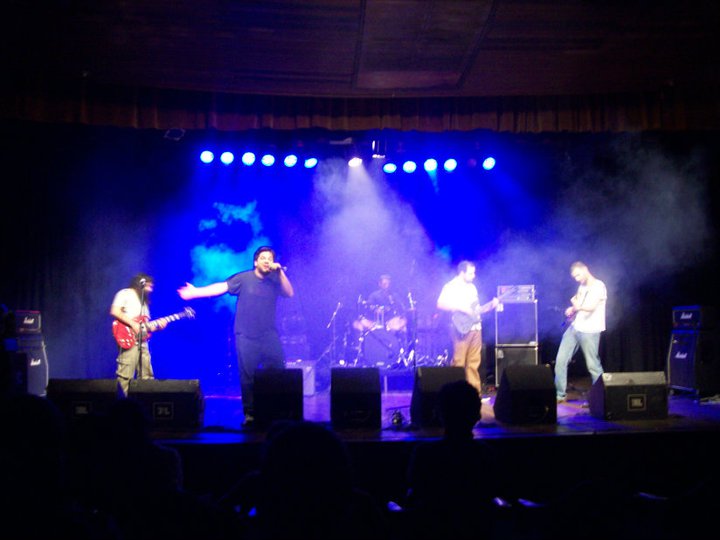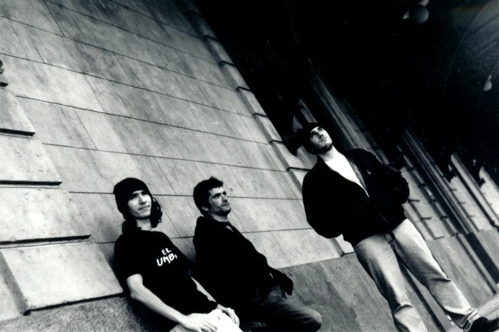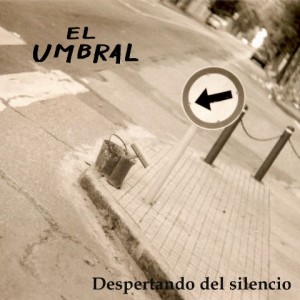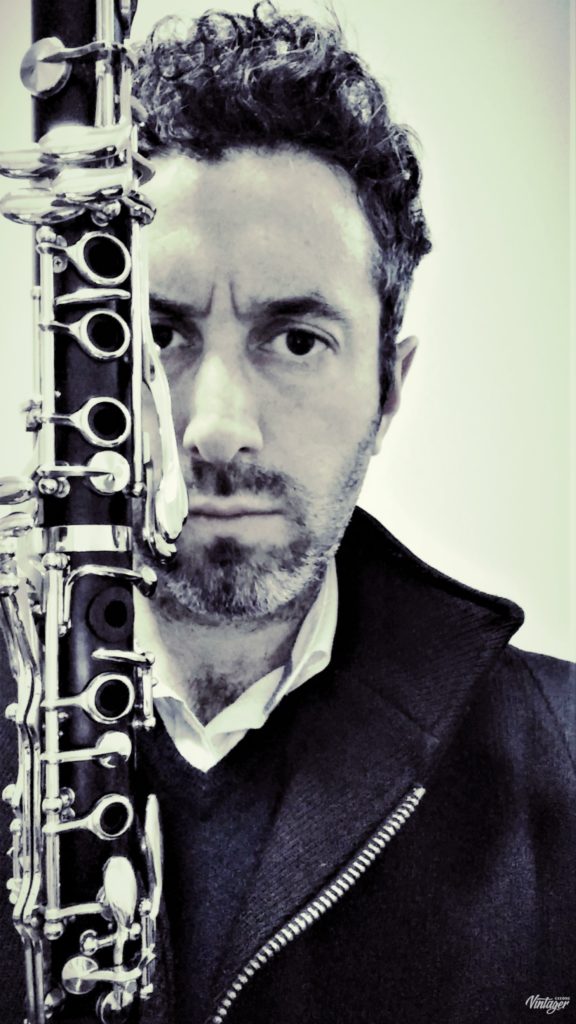
Conocí a Gonzalo Neira como guitarrista primero de Varsovia y luego de Lapso, dos bandas directamente asociadas a uno de los momentos más prolíficos del rock uruguayo, cuando a inicios del nuevo milenio la música nacional vivió una de sus principales renovaciones. Su proyecto solista me tomó por sorpresa – “Cachafaz” es un disco de corte instrumental, con el jazz como principal (mas no único) eje. Y tan placentero como escucharlo fue el intercambio que mantuve con Gonzalo por correo electrónico, y sus respuestas y reflexiones sobre cómo y por qué la música resuena y conecta con las personas.
Por lo general, los discos solistas de integrantes de bandas de rock son o muy cercanos al sonido que perfeccionaron con sus respectivas bandas, o algo radicalmente distinto. “Cachafaz” es evidentemente lo segundo; no solo está más cercano al jazz, sino que también marca tu debut como clarinetista. ¿Cómo es el camino que te condujo de Varsovia y Lapso a un álbum de estas características?
“Cachafaz” es el resultado de un problema que padezco y que he dado en llamar trastorno de múltiple personalidad musical.
Desde niño llevo una doble vida musical; por un lado soy un amante de las bandas de pop y rock de los 80s y 90s, pero por otro tengo un alter ego estudioso, tímido y reservado que recorrió un camino diferente.
Llamémoslos INDIVIDUO 1 e INDIVIDUO 2.
El INDIVIDUO 1 toca la guitarra eléctrica, que es su instrumento principal. Ese es el que vos conocés que tocó en Varsovia y recientemente el Lapso. Es extrovertido y le gusta la vibración que se siente al tocar arriba de un escenario.
El INDIVIDUO 2 fue incentivado a estudiar otros instrumentos desde chico. A los 6 años tocaba flauta dulce, luego piano, solfeo y más recientemente clarinete. Tomó clases de armonía, contrapunto, lectoescritura, composición y orquestación. Es bastante tímido y disfruta de la música en soledad. El individuo2 es un nerd.
Dicho esto, no hay un “camino” o transición de los proyectos de pop-rock hacia este disco de jazz-fusión, sino más bien una presentación del individuo 2 en sociedad.
Existe una creencia bastante generalizada entre muchos oyentes que a las canciones lo que las define es su melodía, y que la letra es algo secundario, que existe en función de la música. Ciertamente, el rock en sus orígenes tuvo una etapa gutural (“Tutti Frutti”, “Be-Bop-A-Lula”). Y son contadas las canciones cuya fama reside únicamente en la letra. “Blowin’ In The Wind”, “Sounds Of Silence”… esos son dos ejemplos obvios en inglés. Y en español, se me ocurre una canción como “Ojo Con Los Orozco” de León Gieco, pero eso es más por el artificio empleado que por la narrativa o la belleza poética misma del texto.
Ahora, es innegable que canciones como “My Heart Will Go On” nunca hubieran tenido la repercusión que tuvieron si la letra hubiera tratado sobre cualquier otra cosa.
Entonces, ¿en dónde te deja esto a vos y a tu propuesta de raíz instrumental?
Es bien interesante lo que planteás. El dilema de si es más importante la música o la letra creo que quedará sin resolver. Lo que sí puedo contarte es lo que a mí me pasó con la música vocal extensivo a las estructuras de la música pop en general.
Me aburrió un poco adivinar lo que iba a suceder en una canción. Te cuento con un ejemplo. A mí me gusta mucho The Smiths. He escuchado el tema “There is a Light That Never Goes Out” cientos de veces y lo considero una verdadera obra de arte de la lírica. Dicho esto, el hecho de saber de memoria su estructura, la letra, el color de la voz de Morrissey en esa grabación, los acordes que toca Johnny Marr y con qué grabó esa canción, hace que como hecho artístico esté un poco agotada (para mí) y lo único que me atraiga de escuchar esa canción hoy sea la nostalgia que me produce y la conexión de la canción con algún estado de ánimo que yo pueda tener hoy. Conozco la canción. Me encanta. No la puedo escuchar más. Se me gastó. Este fenómeno me ha pasado con otras: “One” de U2, “Like a Child Again” de The Mission, “Friday I’m In Love” de The Cure (todas obras inigualables).
Con la música instrumental y particularmente con el jazz eso no me pasa: no tenemos demasiadas instrucciones para escuchar, no hay tanta repetición estructural, no me están contando una historia, sino que están generando un lugar donde mis emociones pueden vivir. Me están invitando. A lo sumo el título de la canción en algunos casos da una pista de cuál fue la inspiración del compositor, pero esto rara vez sucede. De este modo, al escuchar una canción de música instrumental y particularmente de jazz, la canción y yo nos encontramos en un plano de comunión bastante más particular. Esto no es una explicación general sino que es lo que yo siento.
Aparte de esa característica sucede que en el jazz las reglas son mucho más flexibles. Hay otras licencias. Hay también más información armónica y melódica y eso hace que la experiencia, como músico que escucha sea más rica. Siento que la paleta del compositor de jazz tiene más colores que las del compositor de rock o pop. La riqueza armónica se acentúa por la rítmica: basta escuchar el clásico disco del Dave Brubeck Quartet “Time Out” para encontrar un ejemplo claro de rítmicas atípicas. El superclásico “Take Five” escrito por Desmond está en 5/4.
En definitiva me sedujo este nuevo lugar y me cansé un poco (solo un poco) de los lugares comunes del pop-rock.
Si vos y yo escuchamos a Pappo cantando “Nadie se atreva a tocar a mi vieja porque mi vieja es lo más grande que hay” seguramente ambos decodifiquemos mensajes similares.
Si vos y yo escuchamos la frase inicial de clarinete de “Rhapsody in Blue” de George Gershwin, yo decodificaré un mensaje y vos seguramente uno distinto. Eso hace para mí que la última composición sea más interesante que la primera, sin desmerecer.
Con respecto a la estructura, creo que la canción poprock agotó un poco las posibilidades de sorpresa. ¿Cuánto más podemos hacer con Intro – verso – puente – estribillo? Las partes pueden estar buenas, pero las combinaciones estructurales están un poco agotadas, y el factor sorpresa es algo que yo valoro en la música. Celebro los intentos por salirse del esquema, como Morphine, Radiohead o los Black Eyed Peas.
Por último siento que la música de jazz está muy liberada de prejuicios en la actualidad y tiene un campo muy vasto para desarrollarse. Basta atender lo que está sucediendo con la constante evolución del latin jazz. El estilo está liberado de los clichés del rock y el pop. Se puede conversar con los músicos. Hay mucha humildad. No necesitan de la parafernalia del rock. Es otro idioma.
¿Qué influencias musicales recoge tu disco de manera consciente?
Pat Metheny y su “Pat Metheny Group” fundamentalmente, Lee RItenour, Tommy Emmanuel, Bill Frisell y varios guitarristas estadounidenses. Los clarinetistas Anat Cohen y Ken Peplowski son referentes míos de ese instrumento. Estoy a años luz de todos esos músicos, pero los escucho mucho y seguro que alguna cosa, sobretodo de los guitarristas, puede haberse filtrado hacia mi música. Ojalá.
¿Y qué influencias percibiste al escucharlo una vez finalizado? ¿Fueron esos descubrimientos sorpresivos, alarmantes, o un verdadero motivo de alegría para vos?
Yo quería hacer un disco de jazz, pero vos que lo escuchaste sabés que no es un disco de jazz. Escuchando el trabajo terminado veo que el disco tiene bastante influencia de las cosas que me son más cercanas: la ciudad en la que vivo y su ritmo, mi familia, mis vivencias.
Musicalmente hay una gran influencia de mi amigo y profesor Esteban Klísich y su música. El hombre es realmente un fuera de serie y me enseñó algo importantísimo: que está bueno que lo que soy, donde vivo y lo que vivo aparezca en mis canciones. Me enseñó el valor de la autenticidad. En este sentido incluí dos temas que son candombes y algún otro más regional incorporando ritmos latinos, en especial de Brasil y Cuba, incorporando un percusionista.
Hay gran influencia también de Agustín Ferreyra, productor y técnico de grabación y mezcla del disco. Tiene una capacidad de trabajo, buen gusto y adaptación al estilo realmente increíbles.
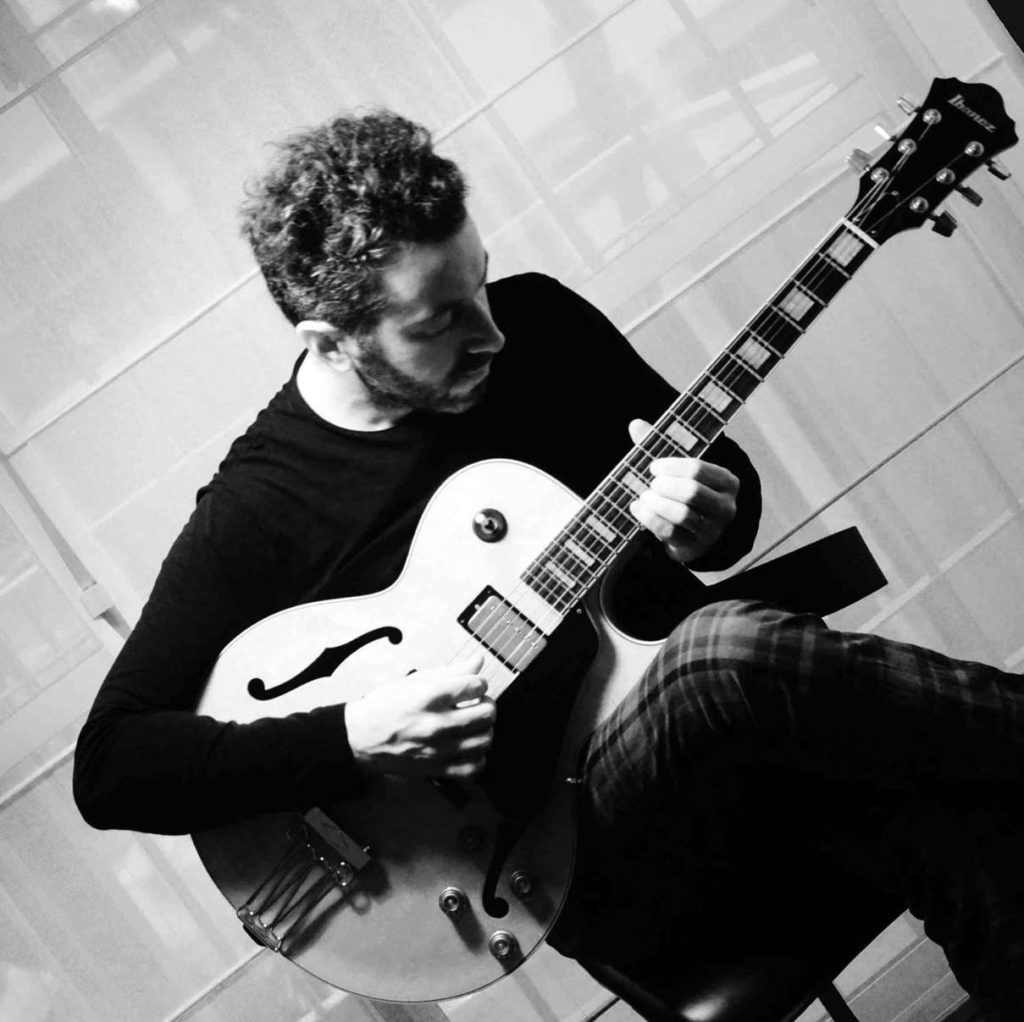
¿Te has planteado incorporar voces en el futuro, o explorar otras vías musicales? Y te lo pregunto concretamente porque he visto que definís “Cachafaz” como “un experimento imposible de reproducir en vivo”.
No me he planteado incorporar voces. Me siento muy cómodo sin voces. Estoy actualmente explorando y componiendo algunas obras para guitarra sola. Es un trabajo muy demandante ya que debo tocar armonía y melodía a la vez (lo que se conoce en jazz como “chord melody”) pero de a poco voy aprendiendo y avanzando.
Lo de “imposible de tocar en vivo” es por tres razones:
La primera es porque muchas de las líneas de guitarra fueron escritas en partitura antes que tocadas y al escribir, uno puede escribir lo que quiera, pero cuando hay que ejecutar, hay límites. Lo cierto es que me quedaron algunos pasajes demasiado intrincados para lo que yo naturalmente puedo tocar. En el estudio se requirieron muchísimas tomas para que yo pudiera grabar esas partes.
La segunda es porque hay canciones en que yo toco más de un instrumento (clarinete y guitarra o bajo y guitarra).
Y la tercera es porque no tengo la energía para reunir y coordinar a los catorce músicos que participaron en la grabación. En fin, sería precioso pero no me da para tanto. Sí tengo en mente reproducirlo en vivo un poco más acotado.
¿Qué composición del disco le recomendarías a alguien que nunca escuchó tu música? ¿Por qué?
Le recomendaría el tema que abre el disco y que se llama “Olivia”. Estoy muy orgulloso de esa composición. Es un tema que me resulta muy divertido escuchar, tiene cierto aire refrescante y pop, pero a la vez tiene una rítmica interesante (7/4) y un fraseo que captura la esencia de la persona en que el tema está inspirado.
¿Y (de existir una), cuál le recomendarías a alguien que te conoce por integrar las bandas de rock con las que has tocado?
Le mostraría “La esquina de los tontos”, que me parece el tema que más quiebra con lo de antes. Es un “choro” o “choriño” pero con una base de candombe compuesto para ser interpretado por cuatro instrumentos de viento: flauta, clarinete, oboe y fagot. Me parece una buena carta de presentación del INDIVIDUO 2.
Hablemos de tus planes, lógicamente a largo plazo, por la situación actual que estamos atravesando. ¿Qué proyectás realizar tanto como solista como con Lapso?
Actualmente no formo parte de la banda Lapso.
Como solista tengo varios proyectos. Estoy componiendo temas para guitarra solista instrumental con la idea de grabar un disco de esas características, estoy dando clases de guitarra, estoy estudiando producción con Agustín Ferreyra, tengo planes para armar una versión resumida de la banda que grabó “Cachafaz” y así poder tocarlo en vivo cuando se pueda, estoy escribiendo un libro de música para acompañar mi labor docente, estoy muy interesado en trabajar en producción musical para radio, TV y cine y tengo un proyecto de investigación de historia de la música popular infantil para niños en Uruguay que ojalá se concrete.
Como clarinetista planeo ingresar en la “Orquesta da Capo”, proyecto que se interrumpió por la pandemia.
Son muchos proyectos. Con que alguno suceda está bien.
¿Y alguna vez contemplaron la posibilidad de reunir Varsovia? Me parece que es una de las contadas bandas del periodo que nunca se volvió a juntar. Y hace unos días vi un video en Facebook en el cual Guzmán y vos muestran una canción en la que están trabajando juntos.
Hace unos meses hice un intento de reunirnos para tocar con Varsovia pero la mitad de los integrantes no tenía ganas, así que no sucederá. Con Guzmán, que es mi hermano, siempre hablamos de hacer una serie de canciones chicas entre nosotros dos. En eso estamos trabajando a la distancia. Sería bien interesante ver el resultado luego de los caminos que hemos recorrido solos.

